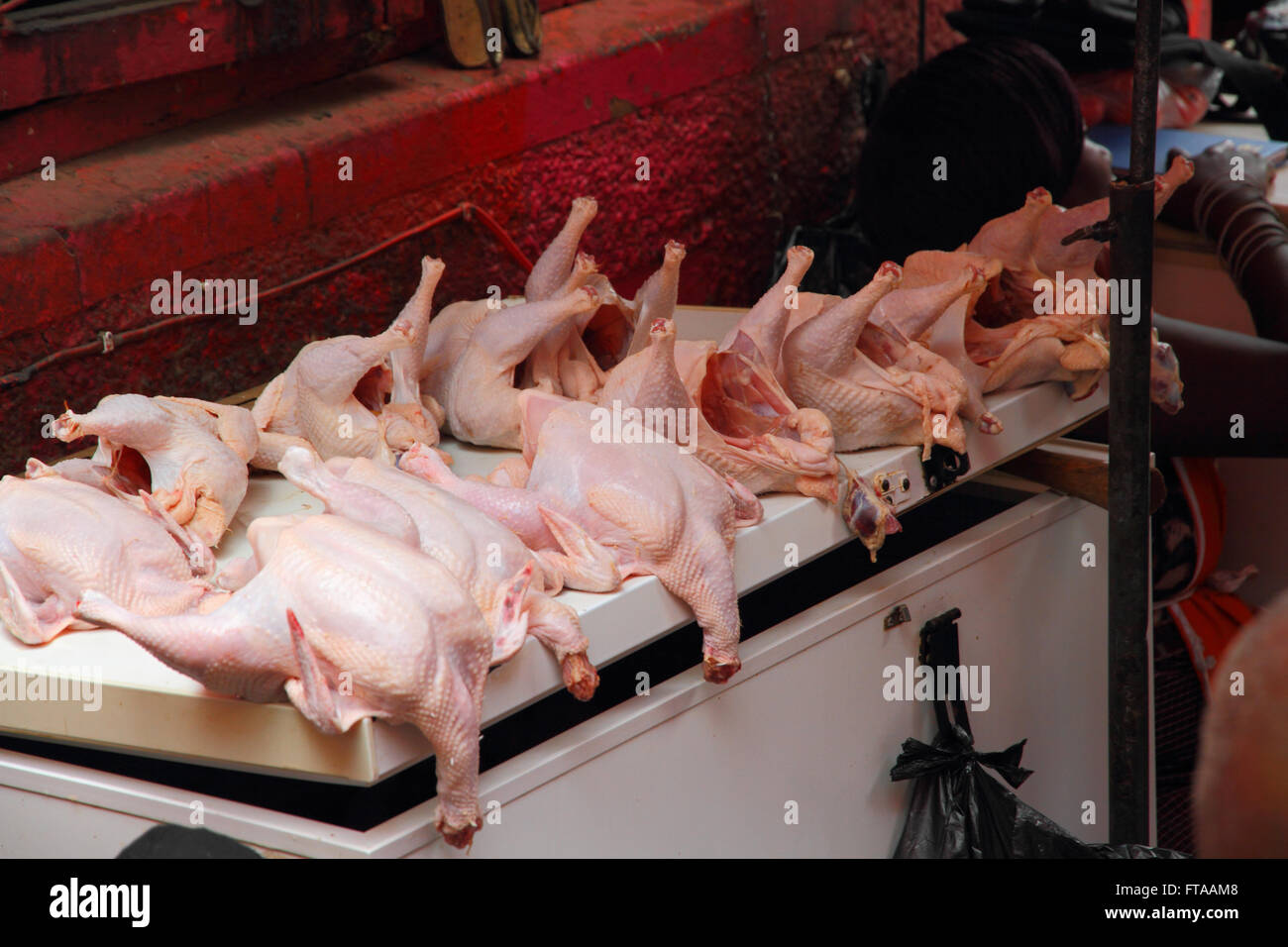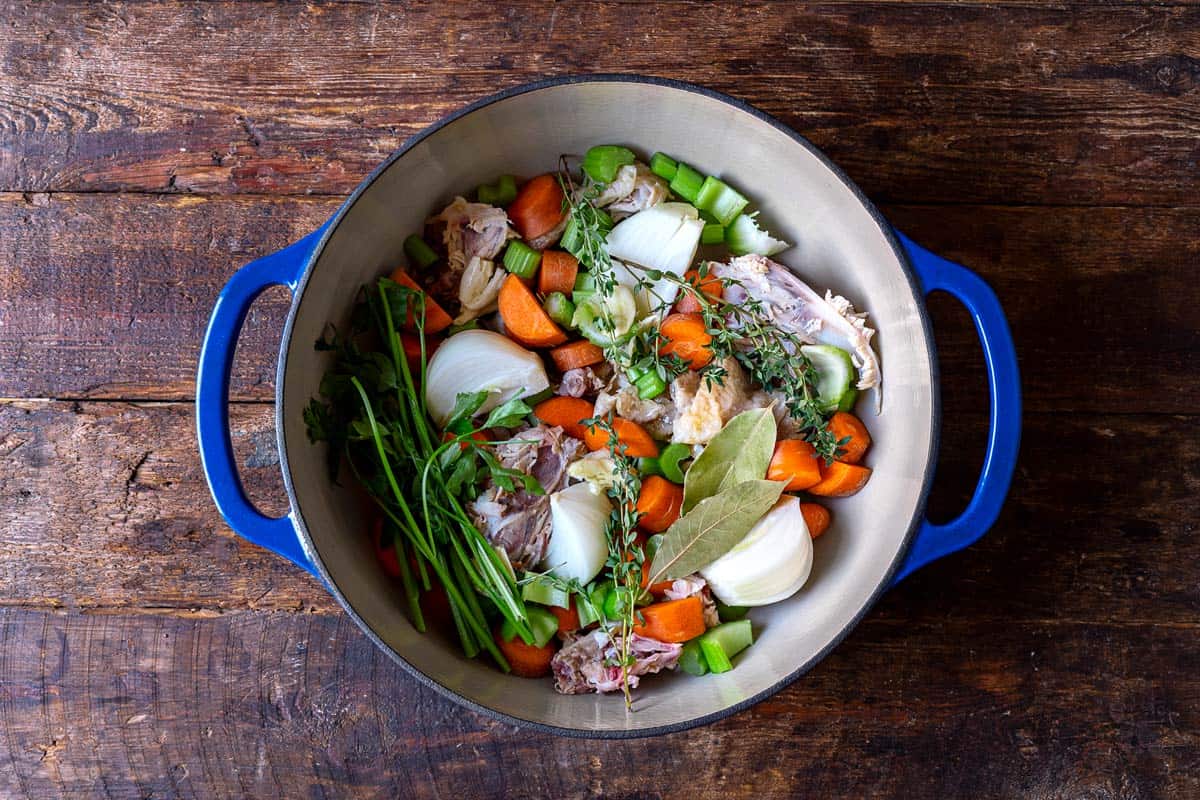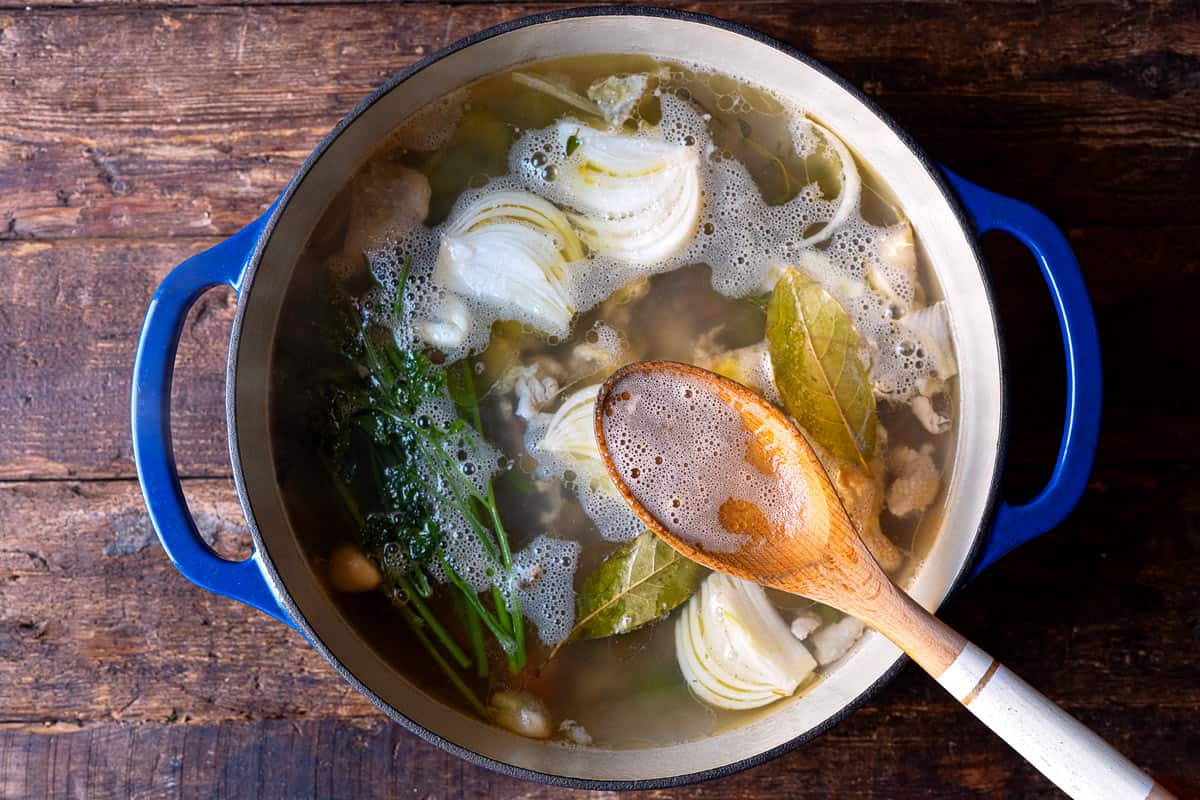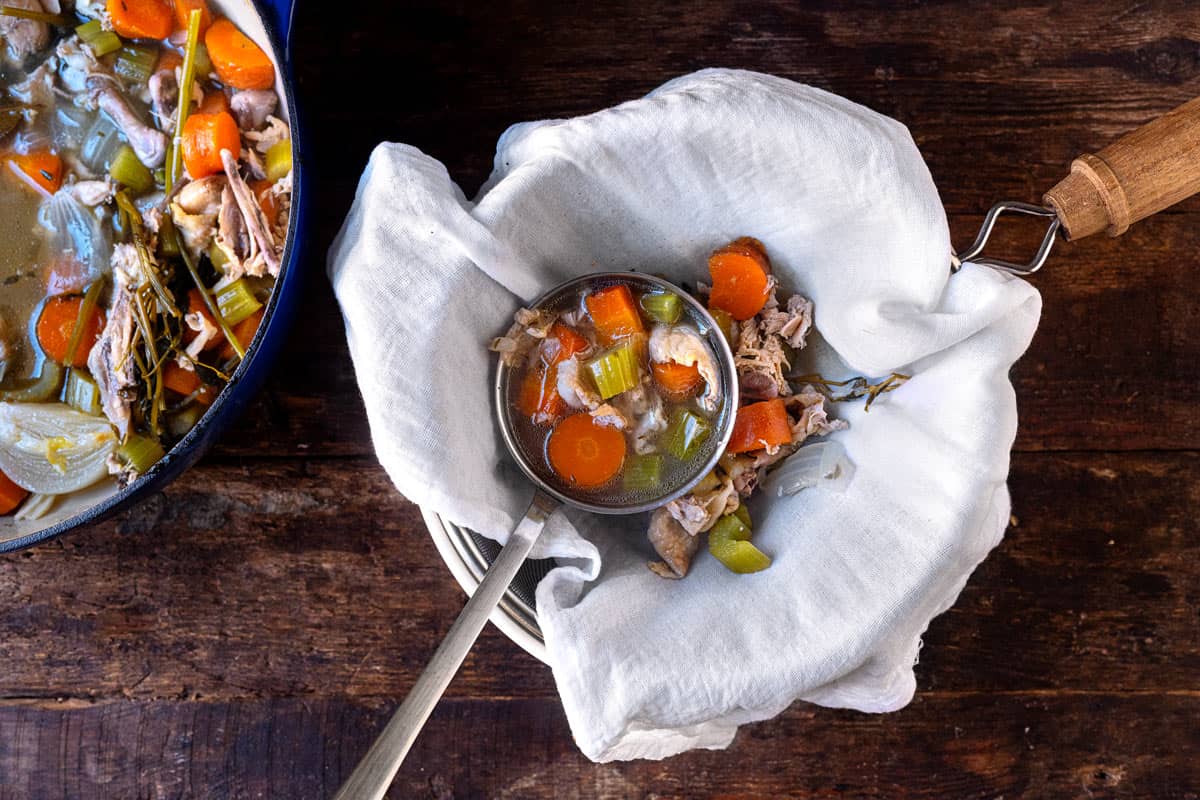Hey there, food lovers! Ever found yourself starin’ at the leftover bones after a hearty chicken dinner and wondered, “What exactly is this mess, and can I do somethin’ with it?” Well, you’re in the right spot. Today, we’re divin’ headfirst into the world of chicken carcasses. Simply put, a chicken carcass is the bones and cartilage “frame” of the bird after all the prime meat—like breast, drumsticks, thighs, and wings—has been sliced off. And guess what? There’s often still a decent chunk of meat clingin’ on, dependin’ on how slick the butcher was with their knife skills. At our lil’ kitchen corner, we believe in squeezin’ every bit of value out of our food, and trust me, these bony leftovers ain’t just trash—they’re a hidden gem!
In this post, I’m gonna break down what chicken carcasses really are, why they’re worth your attention and how you can turn ‘em into somethin’ downright tasty or useful. From makin’ rich soul-warming broth to other outta-the-box uses, we’ve got a lot to cover. So, grab a cup of coffee (or maybe some homemade stock by the end of this), and let’s get crackin’ on understandin’ these skeletal remains.
What Exactly Is a Chicken Carcass? Let’s Break It Down
Alright, let’s get to the meat of the matter—pun totally intended. A chicken carcass is basically what’s left after you or the butcher have taken off most of the good stuff for eatin’. Picture this: it’s the skeletal structure, the backbone and frame of the chicken, made up of bones and cartilage. But it ain’t just bare bones—there’s usually some bits of meat still hangin’ on, especially around trickier spots like the back or thighs. Sometimes, there’s even a little skin left, addin’ a touch of flavor and fat to the mix.
Here’s a quick peek at what makes up a typical chicken carcass:
- Bones: The main deal here. These are light but packed with goodies like calcium and collagen, which are gold when you’re cookin’ up stuff like stock.
- Cartilage and Tendons: Found around the joints, these bits are flexible and tough. They’re full of collagen too, which turns into gelatin when cooked, givin’ your broth that silky, rich feel.
- Residual Meat: Like I said, there’s often some meat left behind. It might not be enough for a full meal, but it’s perfect for addin’ flavor to soups.
- Skin: If it’s still on, it brings extra fat and taste to whatever you’re makin’.
- Occasional Extras: Dependin’ on how it was processed, you might find tiny remnants of organs like kidneys or heart, though these are usually cleaned out for human use.
So, next time you’re lookin’ at that pile of bones after a roast chicken night, know that you’ve got a little treasure trove of flavor and nutrients sittin’ right there. It ain’t just leftovers—it’s potential!
Why Bother with Chicken Carcasses? The Culinary Magic
Now that we know what a chicken carcass is, let’s chat about why you shouldn’t just chuck it in the bin. The number one reason I’m obsessed with these bony bits is their power in the kitchen. They’re the secret weapon behind some of the best soups stews and sauces you’ll ever taste. Here’s the lowdown on turnin’ these remains into culinary gold.
Makin’ Stock or Broth That’ll Blow Your Mind
If you’ve never made your own chicken stock, you’re missin’ out big time! It’s super simple: just toss that carcass into a big pot of water, simmer it for hours, and watch the magic happen. The bones, cartilage, and leftover meat release all their flavors and nutrients into the liquid, creatin’ a base that’s perfect for soups, gravies, or even just sippin’ on its own. Here’s how I do it:
- Grab a large pot and throw in the chicken carcass. Don’t worry if it’s got some meat or skin still on—that’s extra flavor!
- Add some basic veggies like onions, carrots, and celery. I usually just use whatever’s sittin’ in my fridge lookin’ sad.
- Toss in a few herbs—thyme, parsley, or a bay leaf if you’ve got ‘em.
- Cover with water, bring to a boil, then let it simmer low and slow for 4-6 hours. Sometimes I even leave it overnight if I’m feelin’ lazy.
- Strain out the solids, and boom—you’ve got liquid gold.
The difference between stock and broth? Well stock’s usually made more from bones and cartilage so it’s thicker and richer thanks to all that gelatin. Broth often comes from meat and veggies, makin’ it lighter. Either way, a carcass is your ticket to both.
Other Tasty Ideas
Stock ain’t the only game in town. You can use the carcass to make bone broth—a fancier, longer-cooked version of stock that’s packed with health perks. Or, if you’ve got some creativity in ya, render the fat from the skin to make schmaltz, a killer alternative to butter for fryin’ up potatoes or veggies. Trust me, once you start playin’ around with these bones, you’ll wonder why you ever threw ‘em out.
The Nutritional Goodies Hidin’ in Chicken Carcasses
Speakin’ of health perks, let’s talk about why chicken carcasses are more than just flavor bombs—they’re legit good for ya. When you simmer down those bones and cartilage, you’re pullin’ out a bunch of nutrients that can do wonders for your body. Here’s what you’re gettin’:
- Collagen and Gelatin: These come from the cartilage and tendons. They’re awesome for your joints, skin, and even gut health. I’ve noticed my skin feels a bit smoother since I started sippin’ bone broth regularly.
- Minerals Galore: We’re talkin’ calcium, phosphorus, and magnesium. Great for keepin’ your bones strong and your body runnin’ smooth.
- Protein and Amino Acids: Even the small bits of meat left on the carcass add some protein, plus amino acids that support all kinda stuff in your system.
- Extra Boost from Quality: If you can snag a carcass from an organic or pasture-raised bird, you might get higher levels of omega-3s and other fancy nutrients. I always try to go for the good stuff when I can.
Makin’ broth or stock from a carcass is like creatin’ a superfood potion right in your kitchen. It’s cheap, it’s easy, and it’s a heck of a lot better than buyin’ those store-bought versions full of weird additives.
Safety First: Handlin’ Chicken Carcasses the Right Way
Before we get too excited, lemme drop a quick reality check. Chicken carcasses can be awesome, but you gotta handle ‘em proper to avoid any nasty surprises. Raw poultry can carry bacteria like Salmonella or Campylobacter, and trust me, you don’t wanna mess with food poisonin’. Here’s my go-to tips for keepin’ things safe:
- Storage: Keep that raw carcass in the fridge at below 40°F and use or freeze it within a day or two. If you’ve made stock, it’ll last 3-4 days in the fridge or longer if frozen.
- Cookin’: Always cook anything made from the carcass to at least 165°F internally. That heat kills off any bad bugs lurkin’ around.
- Hygiene: Wash your hands, utensils, and surfaces after touchin’ raw chicken bits. I’ve got a habit of wipin’ down my whole counter just to be sure.
- No Cross-Contamination: Keep that carcass away from other foods in your kitchen till it’s cooked. I use a separate cuttin’ board just for poultry stuff.
Follow these basics, and you’ll be fine. I’ve been messin’ with carcasses for years and ain’t had a problem yet, knock on wood!
Beyond the Kitchen: Surprisin’ Uses for Chicken Carcasses
Alright, so we’ve covered the food angle, but chicken carcasses got more tricks up their sleeve. They’re super versatile and can be used in ways you might not expect. Check out these ideas:
- Pet Food: Got a furry friend? Cooked carcasses (with bones removed) can be a nutritious treat for dogs or cats. Just check with your vet first to make sure it’s cool for your pet’s diet. My pup goes nuts for a little shredded chicken from the bones.
- Fertilizer: The bones can be processed into bone meal, which is a fantastic natural fertilizer for your garden. It’s loaded with phosphorus to help plants grow big and strong.
- Industrial Stuff: Some clever folks are even lookin’ into usin’ carcass parts for things like makin’ adhesives or biomaterials. Ain’t that wild?
Usin’ the whole bird like this feels good—it’s all about respectin’ the animal and reducin’ waste. We try to make the most of every bit at our place, and it’s kinda satisfyin’ to know nothin’ goes to the dump.
Carin’ About Where It Comes From: Ethical and Green Thoughts
Speakin’ of waste, let’s chat about the bigger picture. Usin’ chicken carcasses ain’t just about savin’ money or eatin’ well—it’s also tied to how we treat our planet and the critters on it. Here’s a few things I keep in mind:
- Sourcin’ Smart: I always try to get my chicken from places that raise ‘em humanely—think free-range or organic. It costs a bit more, but knowin’ the bird had a decent life makes me feel better about usin’ every part.
- Waste Management: If you can’t use the carcass, don’t just toss it carelessly. Composting is an option if you’ve got a hot system to break it down safe, but it ain’t for everyone due to pests and pathogens. Check local rules for disposal if you’re unsure.
- Eco-Friendly Vibes: By turnin’ carcasses into broth or fertilizer, you’re cuttin’ down on food waste and helpin’ create a more sustainable kitchen. It’s a small step, but every bit counts, right?
Bein’ mindful about this stuff makes cookin’ with carcasses feel like more than just a meal—it’s a lil’ act of responsibility.
Wrappin’ It Up: Why You Should Give Chicken Carcasses a Shot
So, there ya have it—chicken carcasses ain’t just some random pile of bones. They’re the frame of the bird after the main meat’s gone, often with a bit of extra meat hangin’ on, and they’re loaded with potential. Whether you’re simmerin’ ‘em down for a hearty stock, boostin’ your health with nutrient-rich broth, or findin’ other quirky uses, there’s no reason to let ‘em go to waste. I remember the first time I made stock from a carcass—honestly, it was a game-changer. The depth of flavor was unreal, and I felt like some kinda kitchen wizard.
Next time you’ve got a chicken carcass sittin’ around, don’t just bin it. Experiment a little! Throw it in a pot with some veggies and see what kinda magic you can whip up. Or, if you’ve got a garden or pets, think about how those bones can keep givin’ back. We’re all about makin’ the most outta what we’ve got, and trust me, these leftovers got a lotta life left in ‘em.
Got any fave ways to use a chicken carcass? Drop your ideas below—I’m always lookin’ to try somethin’ new in the kitchen. Let’s keep this convo goin’ and share the love for turnin’ scraps into somethin’ spectacular!

Chicken Stock Flavor Variations
Get creative when it comes to adding herbs, spices, and aromatics to chicken stock. Here are are few ideas to get you started:
- Use the base recipe here, then add 1 leek, 1 sprig of rosemary and a handful of mushroom stems
- Swap the thyme for dill
- Swap the thyme for 1 inch of ginger and a small chili or mild jalapeño
- Add chopped fennel bulb and three whole cloves
- Add crushed cardamom pods
How to Make Chicken Stock
Learning how to make chicken stock is easy. To make homemade chicken stock, place chicken bones, vegetables, herbs and spices into a large pot. Cover with cold water then simmer for about 3 hours. Let it cool, then skim the fat. Store in the refrigerator for up to 5 days or in the freezer for up to 6 months.
- Strip the chicken carcass of meat: This is hardly delicate work. You have to be willing to get your hands dirty to pull and peel the meat off the bones. Don’t forget to flip the bird over and pull the meat from the underside. There is plenty there. Transfer the meat to a container and keep in the fridge. Use it in soup, chicken salad, or to top a bed of greens. Now to address the bones.
- Make the stock: Into a large stock pot or Dutch oven add the chicken carcass – bones, skin and any random bits. Add the chopped celery, carrots, onion, garlic, thyme, bay leaves, parsley stems and peppercorns if using.

- Cover with cold water and simmer: Pour 10 cups of cold water over the ingredients in the stockpot and turn the heat to medium, just until you see a low boil, then reduce to medium low (or whatever temp you need to keep the stove at for a gentle simmer). You want the stock to simmer and never boil for any length of time because boiling can cause the fat and proteins to emulsify and give you dark, greasy stock. Cover with a lid.
- Skim the stock: Simmer on medium low for the next 3 hours. Check every 45 minutes or so and use a spoon to skim any foam that may form off the surface. This is not an exact science. If you lose track of time, and it simmers for 4 hours that’s Ok. You’ll just have a more concentrated stock and might need to add water. If you’re short on time and you only have 2 hours then you’ll just have a lighter stock. That’s Ok too. There is no room for perfectionists in stock making!

- Strain the stock: Layer a fine mesh strainer with cheesecloth. Set it over a large bowl, then ladle the stock into the lined strainer. Press on the solids to release any additional liquid. When it’s done you should have between 5 and 6 cups of stock depending upon how much it has reduced.

- Use, store or freeze: Now that you’ve made this golden elixir with bones and scraps, use it in your next batch of soup or freeze it for a rainy day. Transfer the stock to small containers so it cools down faster. Let it cool completely then cover and transfer to the fridge. Once stock sits in the fridge for a few hours or overnight a fat layer will form on the top. Go ahead and remove that fat layer. The stock will be gelatinous and wobbly when cold. that’s a good thing. Use it within 5 days or freeze it for up to six months.
The Ultimate Guide To Making Amazing Chicken Stock
FAQ
Is chicken carcass stock good for you?
Chicken bone broth is a natural way to heal your gut and improve our health. There’s a reason why people have been making chicken soup for ages when they aren’t feeling well, and if that chicken soup is a bone broth, it is truly a healing food. We use this chicken broth to make Easy Chicken Noodle Soup.
What to put in chicken carcass?
- 1kg chicken. carcasses or wings.
- 1 carrot. cut into chunks.
- 1 onion. skin on, cut into quarters.
- 1 leek. cut into chunks.
- 1 stick of celery. cut into chunks.
- 1 garlic clove. bashed.
- bouquet garni. of 2 parsley stalks, 2 sprigs of thyme and 1 bay leaf, tied with string.
- 5 peppercorns.
What is a quality carcass in chicken?
A quality carcass is characterized by a large amount of lean muscle, a minimal amount of bone, and an adequate amount of fat. From: Encyclopedia of Meat Sciences (Third Edition), 2014.
How many chicken carcasses to make stock?
1 chicken carcass, just the bones. You can make a 10 quart stock. It will have chicken flavor and will do in most recipes you make, eg. soup, sauce, simmering liquid.
What is chicken carcass?
Chicken carcass refers to the remains or the body of a chicken after it has been slaughtered for meat production. It includes the skeletal system, organs, and tissues that are left behind once the chicken has been processed. 5. What nutritional value does the chicken carcass have? 6. Can chicken carcass be used for composting? 7.
Why is chicken carcass important in the poultry industry?
The chicken carcass plays a crucial role in the poultry industry as it is the primary source of meat for various chicken-based products. Do you like this article? **What is chicken carcass?** Chicken carcass refers to the remains or the body of a chicken after it has been slaughtered for meat production.
Why do people eat chicken carcass?
Chicken carcasses are highly valued in the culinary world because they are rich in flavor and can be used as a base for creating delicious stocks, broths, and sauces. 5. Are all parts of the chicken carcass edible?
Is chicken carcass safe to eat?
Yes, chicken carcass is safe to eat as long as it has been properly handled, cooked, and stored. 2. What can be made from chicken carcass? Chicken carcass can be used to make various products such as chicken stock, broth, soups, stews, and even pet food. 3. How is chicken carcass processed for consumption?
What is chicken carcass good for?
Chicken carcass is rich in nutrients, such as protein, vitamins, and minerals. However, its specific nutritional value may vary depending on the cooking and processing methods used. 6. Can chicken carcass be used for composting?
Can chicken carcass be used as pet food?
Yes, chicken carcass can be used as pet food; however, it is important to ensure that the carcass is safe, free from bones, and cooked properly to avoid any potential hazards. 11. How is chicken carcass disposed of in the poultry industry?
